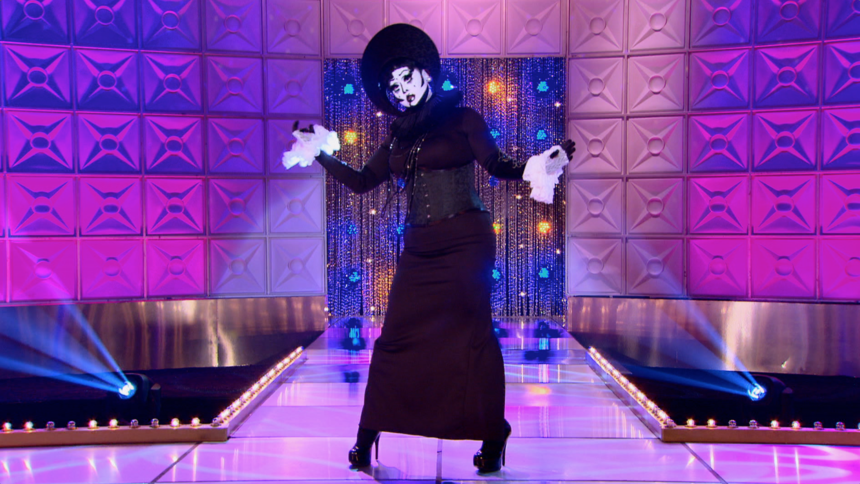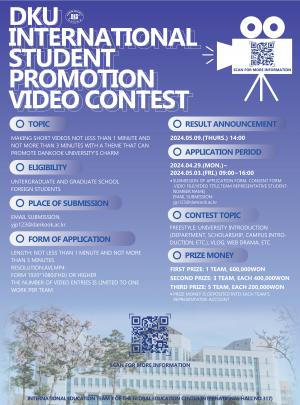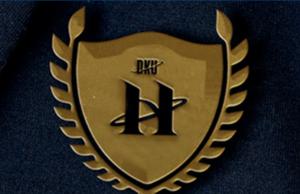 |
| ▲ Drag queen Kim Chi won third place in RuPaul's Drag Race with her creative formations. Above picture is Kim Chi in her black and white makeup. |
If you are a makeup love and like to surf around Youtube, you might have run into the videos of PatrickStarrr and Jeffree Star. The two Youtubers, who have numerous subscribers to their channels, paint themselves with exaggerated eye liners and blinding highlighters. These features are normally seen in drag makeup, worn by drag queens and drag kings. Drag queens and kings are people who perform lip sync songs, comedies and many other stage performances dressed as their opposite gender. Recently, a Korean-American drag queen won third place in RuPaul’s Drag Race, a well-known American reality TV show. Kim Chi, the winner, has since appeared on many timelines of Korean Facebook users’ as she was the first Korean-American drag queen in RuPaul’s Drag Race. Thus, this seems like the perfect time for you to learn more about drag-nificent culture.
Contemporary drag and its relation to the LGTBQ community were embodied out of 1950s bars that did not kick gays out, but rather treated them as their main customers. This was significant at a time, when homophobia was prevalent in society and cross dressing was banned. During the 1960s, bars that gays in became main targets of a homophobic legal system, including arrests of drag queens and gay people. Drag queens raged at police officers cracking down on the LGBT community and raised their flags during the remarkable 1969 Stonewall Riot, an event that is considered the launch pad for the contemporary American LGBTQ rights movement.
If the drag of medieval times could be defined as male actors impersonating females, the modern drag culture is more than just that. Unlike drag of any other times, this form of expression cannot be easily defined. Drag queens are mostly seen on stage singing, dancing, or performing comedy routines while wearing glamorous makeup, but none of this requires strictly female look. Drag queens are not afraid to put makeup on their beard or mustache.
The most essential perspective of today’s drag culture is that it stands against any stereotypes or suppression of character, helping individuals feel free to be themselves. It is a tool of self-expression for al. Drag is beyond any gender boundaries or taste. Being in drag means wearing the fantasy one creates, as Kuciia Diamant, a drag queen of Seoul who performs fascinating lip sync songs, defines. There are some drag queens who desire to be woman, while some others refuse to be seen as a female figure. And all of them are accepted in the drag community.
Moreover, it is very important not to judge people in this culture. Although dramatic eye makeup and blinding highlighters are often seen as the drag queen’s common ground, wearing monochromatic makeup does not disqualify someone as a drag queen. Judging a drag queen’s sexual orientation and thinking all queens want to be a woman, or kings want to be a man is often criticized with charge of creating a gender dichotomy.
Meanwhile, drag culture has started to appear more frequently in Korean society. The Dankook Herald interviewed Chainsmoking Queen, a fellow Dankookian and comedy drag queen. The Queen loves to wear grunge makeup and regularly participates in ‘Seoul Drag’. They (‘they’ is used as a gender neutral singular pronoun in this interview context) was first interested in drag queen culture after watching RuPaul’s Drag Race and soon after Chainsmoking Queen came to be a queen. The Queen told us the hardest part of performing in drag culture is that you are an outsider in Korean society. Furthermore, even though drag doesn’t solely belong to the queer community, the hatred towards the LGBTQ community has extended to drag queens too. Chainsmoking Queen also told us they receives hate speech comments, saying drag is disgusting, when broadcasting performances on Twitter. However, according to her, the best part about being drag queen is of course, being confident in yourself. Before starting drag performances, Chainsmoking Queen felt no connection to the gender queer side of their life. However, after being a drag queen and a member of ‘Seoul Drag’, they is not thrilled to break free from gender boundaries and move instead toward self-expression. Since drag culture is in its infancy in Korea, as the Queen says, they have not much to say about it, but they is looking forward to seeing more and diverse drag people. The Queen would also like to be a part of the Korean LGBTQ rights movements, as a drag queen, in the near future.
There are many ways to watch drag shows in Korea. Queer parades are one of them since drag artists never miss the stages of queer culture festivals. You get to see local drag artists perform their fantasy personas and march along with the rest of the parade, too. Queer culture festivals are held in the cities of Seoul, Daegu, and Busan. For drag only occasions, there is the ‘Busan Drag Prom’ and ‘The Meet Market’ of Seoul that are both celebrating their 6th anniversary this year. Meet Market 2017 is just around the corner as it is planned for October 28. Seoul Drag, the community that Chainsmoking Queen participates in, is also planning a special party called ‘Blood Witches’, in collaboration with another community called ‘The Monstrous Feminine’, this Halloween. If you’d like to know more about the drag festivals and parties, you can follow the communities on Twitter.
Korean drag culture is just beginning and as a result, there are not many drag-mothers to mentor or take care of junior drag queens, even though they need considerable preparation for debuts. However, with less performers you have more opportunities, too. Charlotte Goodenough, a drag queen from New York says in her recent interview with Huffpost that the drag scene of New York is so organized now, audiences have high expectations and mold on drag queens’ styling. As a result, junior drag queens find New York a hard place to break into the market. Meanwhile, Seoul’s drag scene has infinite possibilities depending on the hands of local queens and kings. It is a perfect place to bring out a new and unique flow for drag culture. For Korea’s drag scene to develop, we need to pay more attention to it, with an open mind.
박채리, 윤진현 dankookherald@gmail.com

![[Campus Magnifier] Let's Surf the Library!](/news/photo/202404/12496_1765_4143.jpg) [Campus Magnifier] Let's Surf the Library!
[Campus Magnifier] Let's Surf the Library!
![[Campus Magnifier] Let's Surf the Library!](/news/thumbnail/202404/12496_1765_4143_v150.jpg)





